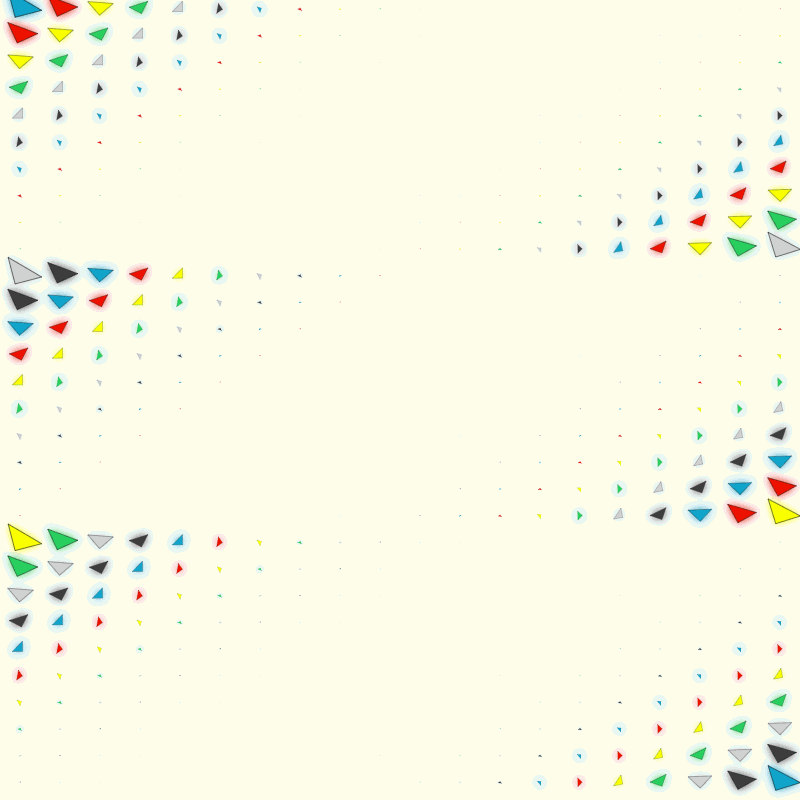Genuary was super rewarding this year. I got almost all the prompts! I Was pretty stoked about actually completing most of them, even though i wish I had some prettier outputs to be honest. I got a lot of life done during regular January too which was cool. Getting 30 pieces done along with a full time job was pretty hard work. I did end up cheating a few times, but I don’t feel to bad. Reading through the genuary website (which you totally should, its hilarious and motivating, even if you are not an artist or whatever) I think I did fine. The goal next year will be of course better outputs, but all 31 prompts. I got a lot of tools, like spectal.js and the use of helper functions that I’ve been re-using though out the challenge that i plan on keeping. Easing functions are super cool as well. I need to learn to re-use work in more productive ways as i usually end up starting from scratch for most things. Below are all of my shared genuary pieces, along with code for most, and a few thoughts around each. Mostly a retrospective/diary Im not sure what value it is meant to provide, but I hope to look back on it in the future.
JAN. 1.
Vertical or horizontal lines only.
For my Genuary day 1 project, I reused and shared some stuff i was already working on that has a reclusively subdivided grid that is able to swap tile positions. This was a fun little project that I probably worked on too long. it was good to finally put it out there for day one.
JAN. 2.
Layers upon layers upon layers.
Inspired by those trident gum commercials . I really liked the whole concept and it cracked me up. I used matter.js for physics. I thought it was neat how the rigid bodies seemed to have some flex, just like gum might. I would have loved to put more into the design on this one.
JAN. 3.
Exactly 42 lines of code.
42 lines of code was a fun challenge, although with the restrictions I used, it wasn’t too hard. Because JavaScript allows you to place semicolons, I could put about as much as I wanted on one line. It was a bit of a fun exercise getting the whole webpage into 42 lines though. The basic idea with the actual art was Bahuas colors and shapes. I was doing some reading around Bauhaus stuff at the time. You can probably see the influence in the work after this point.
After sharing the prompt, I did a bunch of experimenting with quadtrees and implemented this system with them. Quadtrees are super cool, although I’m not sure I really did them in a way that actually took advantage of the performance benefits. Below is a gif of the system using quadtrees.
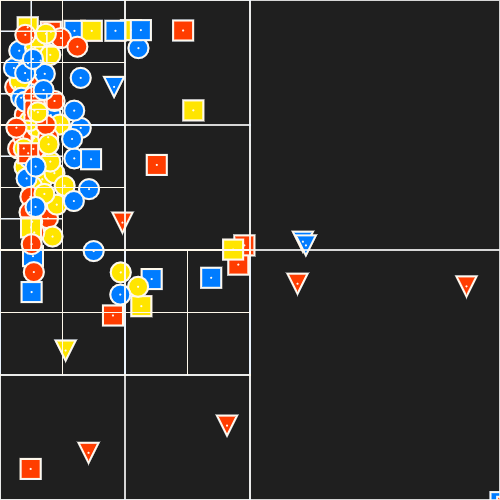
JAN. 4.
Black on black.
For this prompt I tried to emulate a tree at night with some simple particles from the nature of code. Basically particles start at the bottom center, and are affected by noise more as they move up. Pretty simple. I used an erode filter to make the shrinking take place.
I try to take walks frequently. Looking at the silhouettes of trees is one of my favorite pastimes on these walks. I did a small series of drawings of them too. I plan to explore trees more, both their general forms as well as
JAN. 5.
Isometric Art (No vanishing points).
For my Isometric day, I basically ripped off Andrew Strauss series utopian tide. The fun part of this was the logic of drawing order. it was cool to work out how to draw on top of the tower above it. Also , hexagons. This is probably my favorite piece of genuary.
JAN. 6.
Make a landscape using only primitive shapes.
Kept the isometric code from day five and iterated. Actually ended up losing the code for what i actually posted but this is fairly close.
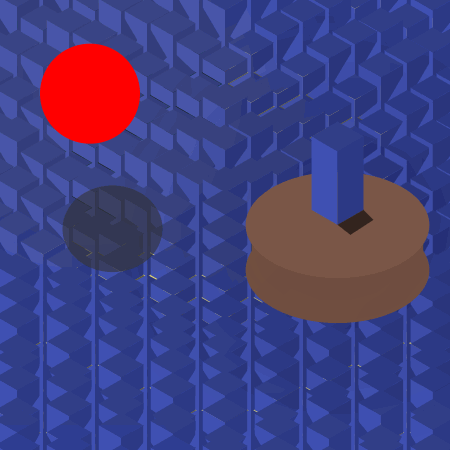

JAN. 7.
Use software that is not intended to create art or images.
For this prompt i had a lot of ideas, but didn’t end up being very creative to be honest. just used google sheets to create a quasi animated grid. Stole some easy pseudo-random functions from glsl, and boom, grid of colors! This was such a cool prompt , saw a lot of great outputs from others. Below is the appscript code:
function createColorGrid() {
// Get the active spreadsheet
var sheet = SpreadsheetApp.getActiveSheet();
// Set grid dimensions
var rows = 500;
var cols = 500;
// Loop through each cell in the grid
for (var i = 1; i <= rows; i++) {
for (var j = 1; j <= cols; j++) {
var cell = sheet.getRange(i, j);
let r = noise2D([i/2,j])
// console.log(r)
// Alternate colors based on row number
if (r<.5) {
cell.setBackgroundColor("#385956"); // Even rows are red
} else {
cell.setBackgroundColor("#9E9E9E"); // Odd rows are blue
}
}
}
}
// Helper functions
function fract(x) {
return x - Math.floor(x);
}
function mix(a, b, t) {
return a * (1 - t) + b * t;
}
function smoothstep(edge0, edge1, x) {
let t = (x - edge0) / (edge1 - edge0);
t = Math.max(0, Math.min(1, t)); // Clamp t to the range [0, 1]
return t * t * (3 - 2 * t);
}
// Random function
function rand(n) {
return fract(Math.sin(n) * 43758.5453123);
}
// 1D noise
function noise1D(p) {
const fl = Math.floor(p);
const fc = fract(p);
return mix(rand(fl), rand(fl + 1.0), fc);
}
// 2D noise
function noise2D(n) {
const d = [0.0, 1.0];
const b = [Math.floor(n[0]), Math.floor(n[1])];
const f = [
smoothstep(0.0, 1.0, fract(n[0])),
smoothstep(0.0, 1.0, fract(n[1]))
];
return mix(
mix(rand(b[0] + b[1] * 57), rand(b[0] + d[1] + (b[1] + d[0]) * 57), f[0]),
mix(rand(b[0] + d[0] + b[1] * 57), rand(b[0] + d[0] + d[1] + (b[1] + d[0]) * 57), f[0]),
f[1]
);
}
JAN. 8.
Draw one million of something.
For this prompt I was feeling a bit lazy so I just took an old grid system and subdivided the shit out of it. I probably could have counted things, would have been cool to stop at exactly one million vertexes or something, but alas, laziness won out this day. No sketch on this page cause its heavy (like this page isn’t lol) but can be found at https://openprocessing.org/sketch/2503172
JAN. 9.
The textile design patterns of public transport seating.
Bus seats are sick . I feel like they sometimes are like an analogue to being in my brain. I rode the bus a fair bit as a child and teen and the seats, changes to them, the general insanity of them were a frequent topic of discussion.
JAN. 10.
You can only use TAU in your code, no other number allowed.
This was another challenge where how you define the rules really is what makes the challenge. Math is cool in that its pretty easy to just make one number another number. TAU/TAU = 1 for example. I liked this challenge a lot cause i use TAU in almost every one of my looping pieces. its an easy thing to keep going back to.
TAU = 2 * pi = 6.2831853…
JAN. 11.
Impossible day
For my impossible challenge i tried to work with some shader stuff from Inigo Quilez . 3d voronoi in shader. I’m not sure I can say I used the best tool for the job as i could throw something that looks a lot better together in blender in like 3 minutes but honestly, I do understand the math a lot more. IQ is such a force of nature in these sorts of things so everything went a little over my head.
JAN. 12.
Subdivision.
This one I tried to keep fairly simple. I can subdivide a grid, no children required. Mondrian boxes came up during my search for references so i made a few sketches that aligned with that theme, with some physics added, just for kicks. I really enjoy looking at stuff like this.
JAN. 13.
Triangles and nothing else.
This prompt was cool cause i wasn’t really bogged down with choice and had a fairly clear vision from the beginning. Make triangles look good. I ended up with some wild ass outputs. I remember thinking to myself WTF when I pressed play a few times.
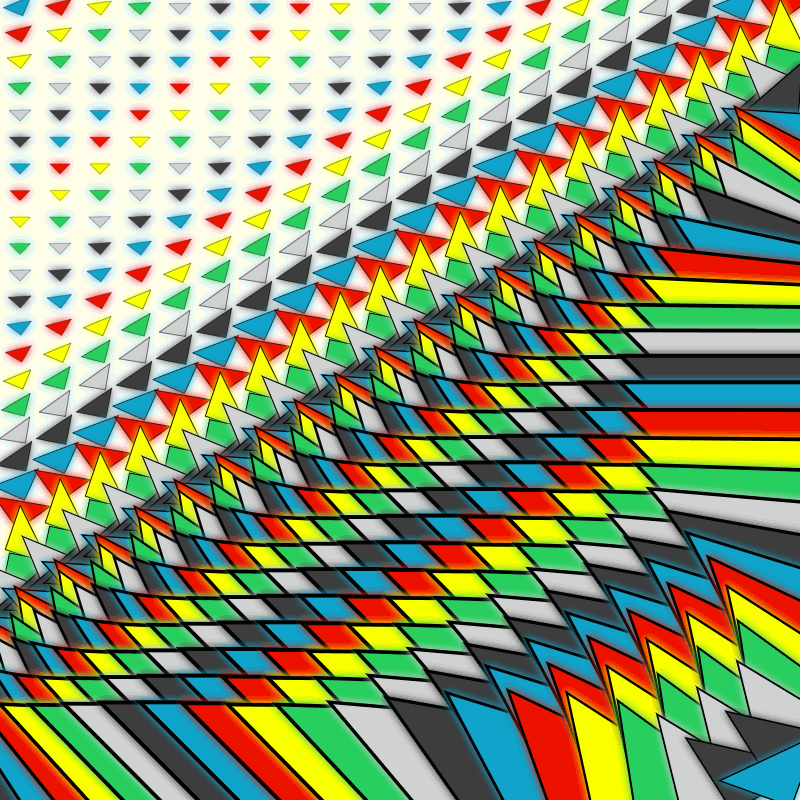
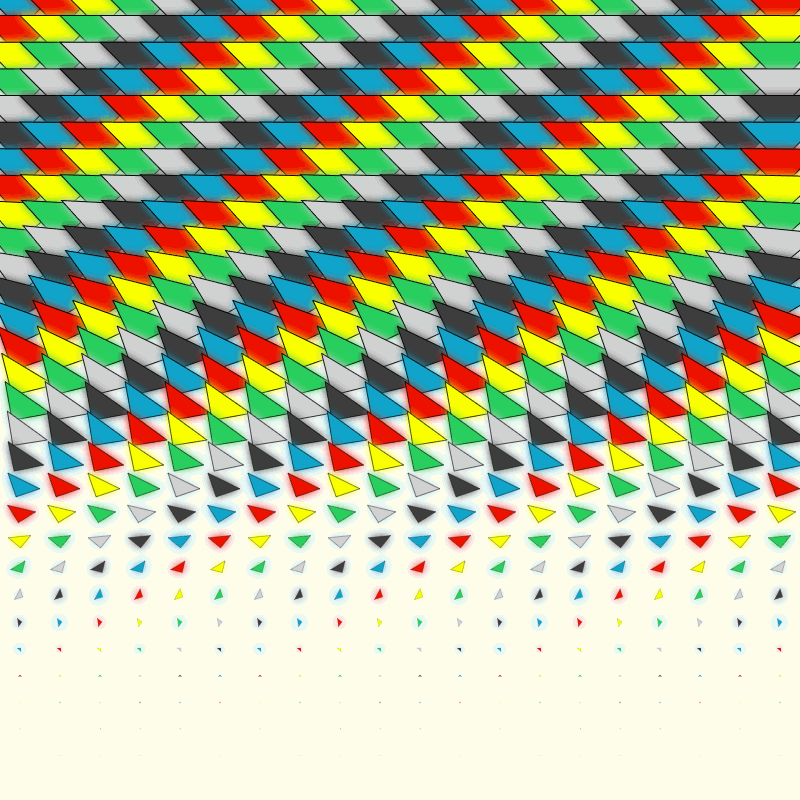
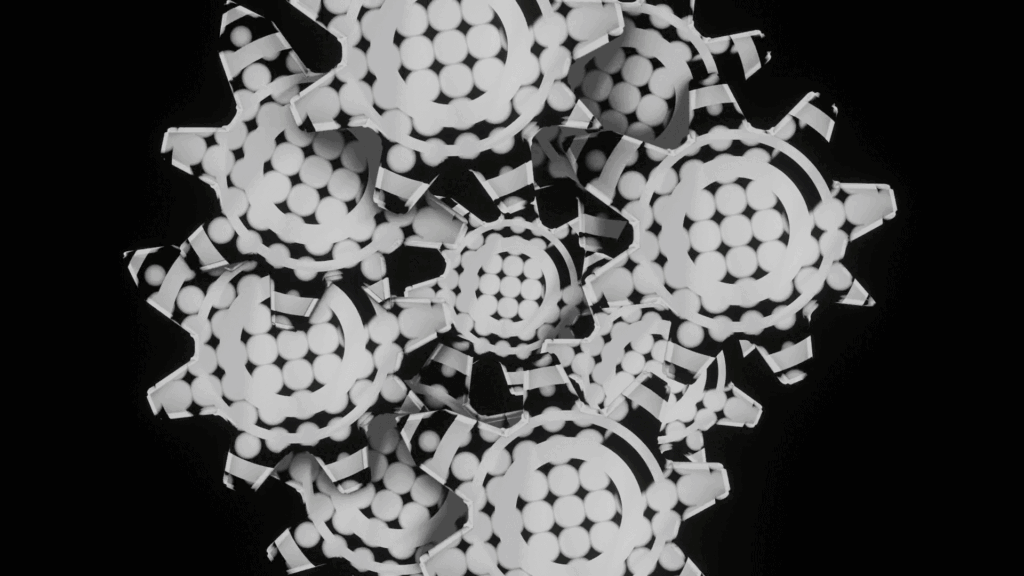

JAN. 14.
Pure black and white. No gray.
for this one I totally cheated and shared a loop that I had previously done in blender. It was a cool little system in blender though, just take a mesh circle, instance a bunch of circles on top , and mess with it. simple but effective. If there is any interest I’d be down to share the blend file.
JAN. 15.
Design a rug.
Had a lot of fun with rug. Took some code from the bus stuff, and kept it pretty simple. Really happy with some of the outputs of this, along with how it looks with the generative palette.
JAN. 16.
Generative palette.
This challenge gave me a lot of tools to work with color in the future. Changing colors over time is a really cool way to make things visually interesting. Took the rug stuff and said lets make this change colors and create colors with randomness. Still kind of Bauhaus inspired, simple shapes etc.
JAN. 17.
What happens if pi=4?
A big question on this one, how far do you go? A lot of things depend on pi such as trig operations. I ended up making a new sin/cosine functions with 4 as pi instead.
JAN. 18
What does wind look like?
For my wind prompt, I took a flow field made with simplex noise to drive some particles that look like flowers to move around the screen. code mostly stolen from the nature of code.
JAN. 19
Op Art.
This was probably like my most liked post of all time on bsky. 50 likes, really hit the algorithm or something. I think using recognizable symbols is what did it personally. This was a take on the Ebbinghaus illusion .The large yinyangs are all the same size but may appear to not be based on the size of the circles around them. Re-used a lot of stuff from previous days to keep things visually interesting. Ended up painting one of these too.
JAN. 20
Generative Architecture.
This one was cool. I really want to work more on generative systems like a city that changes over time, or something like that. For this one I played with perspective mostly. I tried to make a one point perspective scene with a movable vanishing point. I struggled most with drawing order and how to actually render the boxes. Lots of takeaways even if the output wasn’t the most successful in my opinion. Would love to explore this a lot more. Got an idea for a city that changes over time, but that is gonna take a while to get going.
JAN. 21
Create a collision detection system (no libraries allowed).
Honestly I’ve written collision systems more times than I’ve used physics libraries. For this one i was feeling lazy so i just shared some code that i had done previously. Its 3d collision of spheres. Drawing order is one issue i never got around to fixing, but its pretty cool what you can do with just a 2d canvas.
JAN. 22
Gradients only.
It was fun to think about how to accomplish this challenge. Although p5.js doesn’t have built in bindings for the canvas API’s gradient functions, you can invoke that, or just interpolate color on a bunch of overlapping shapes. I opted for the latter, but have been exploring the gradient functions on the canvas API as well, especially in the bus seats prompt. This exact idea was stolen from The Electric Word. I’m pretty stoked with how it turned out. The functions from this code i find myself reusing a lot. This is also what introduced me to spectral.js, a color library that uses Kubelka-Munk theory to provide more accurate color mixing as if one was using paints.
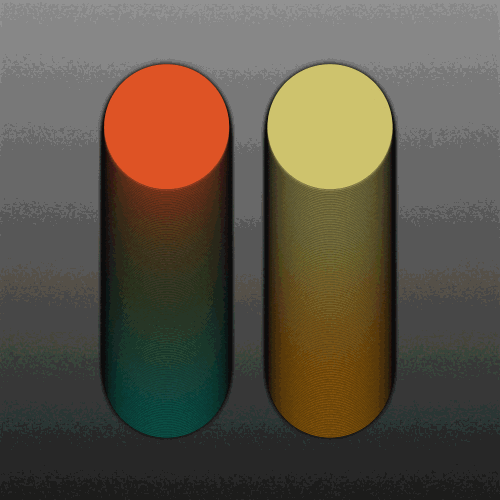
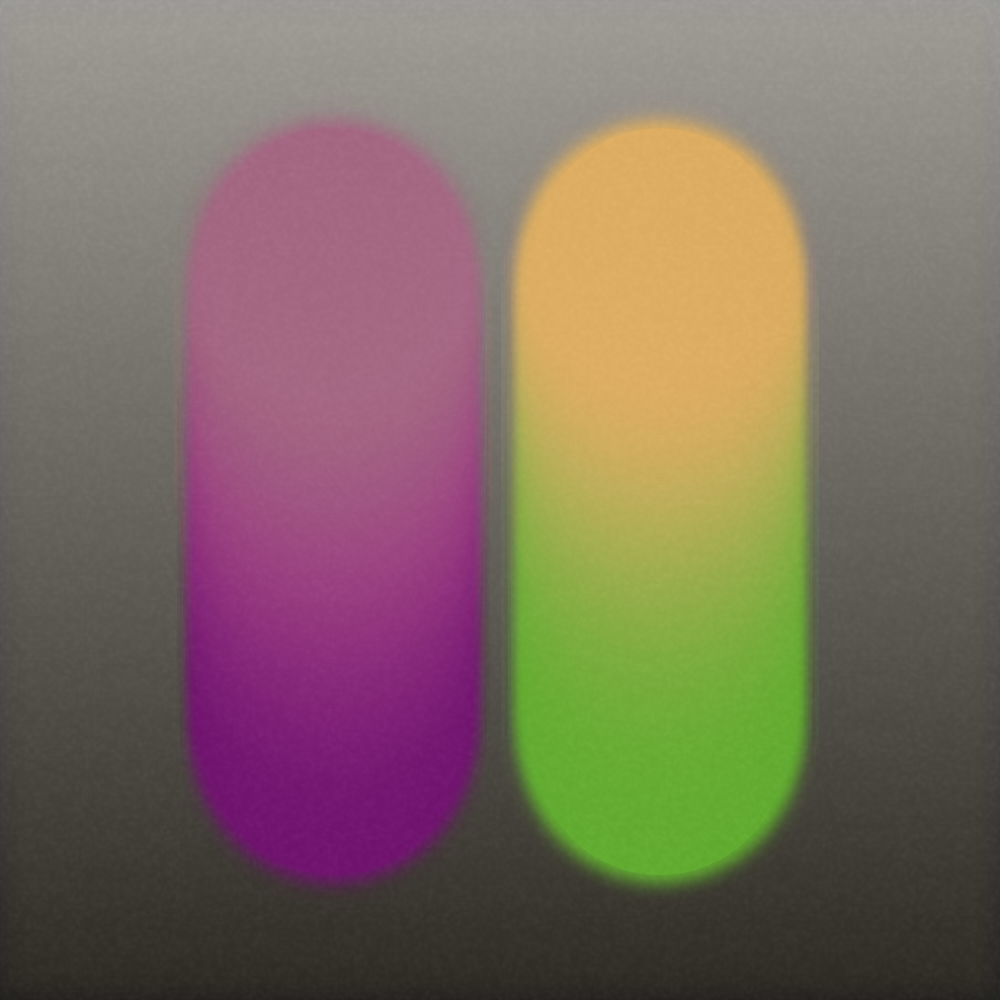
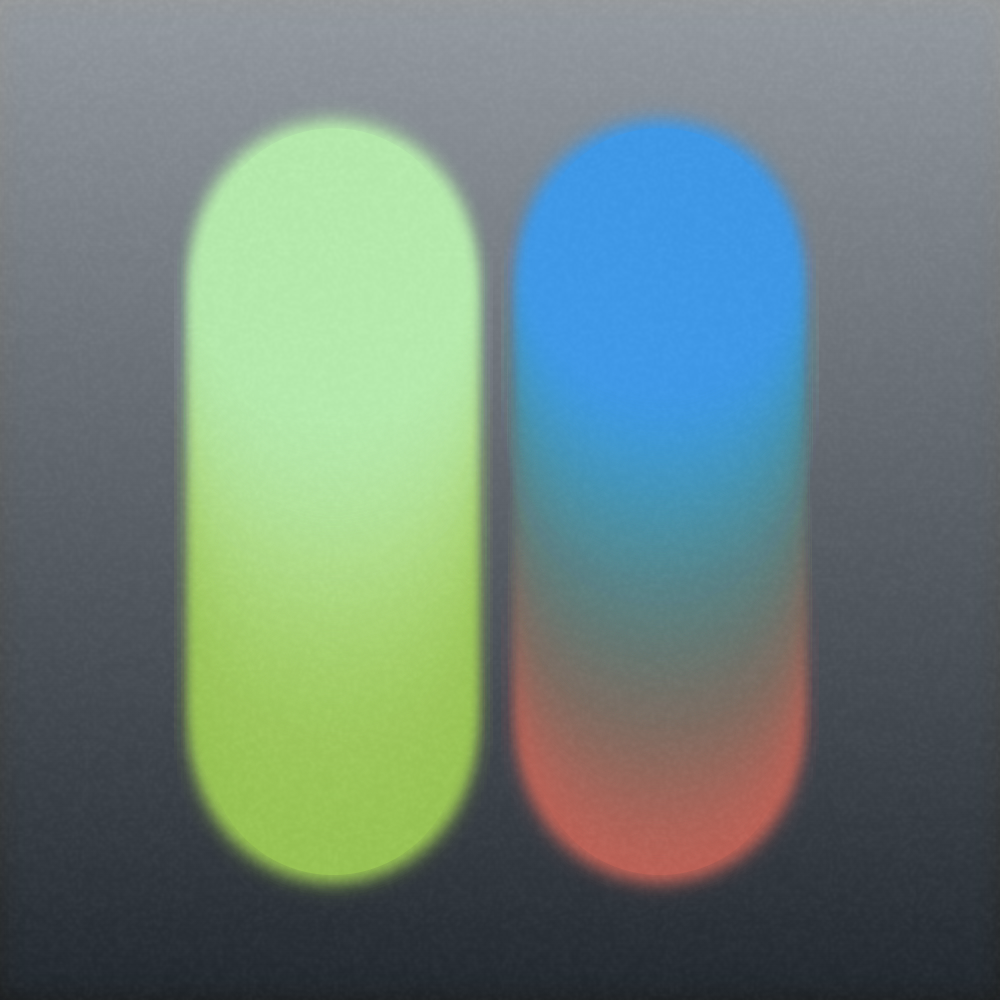
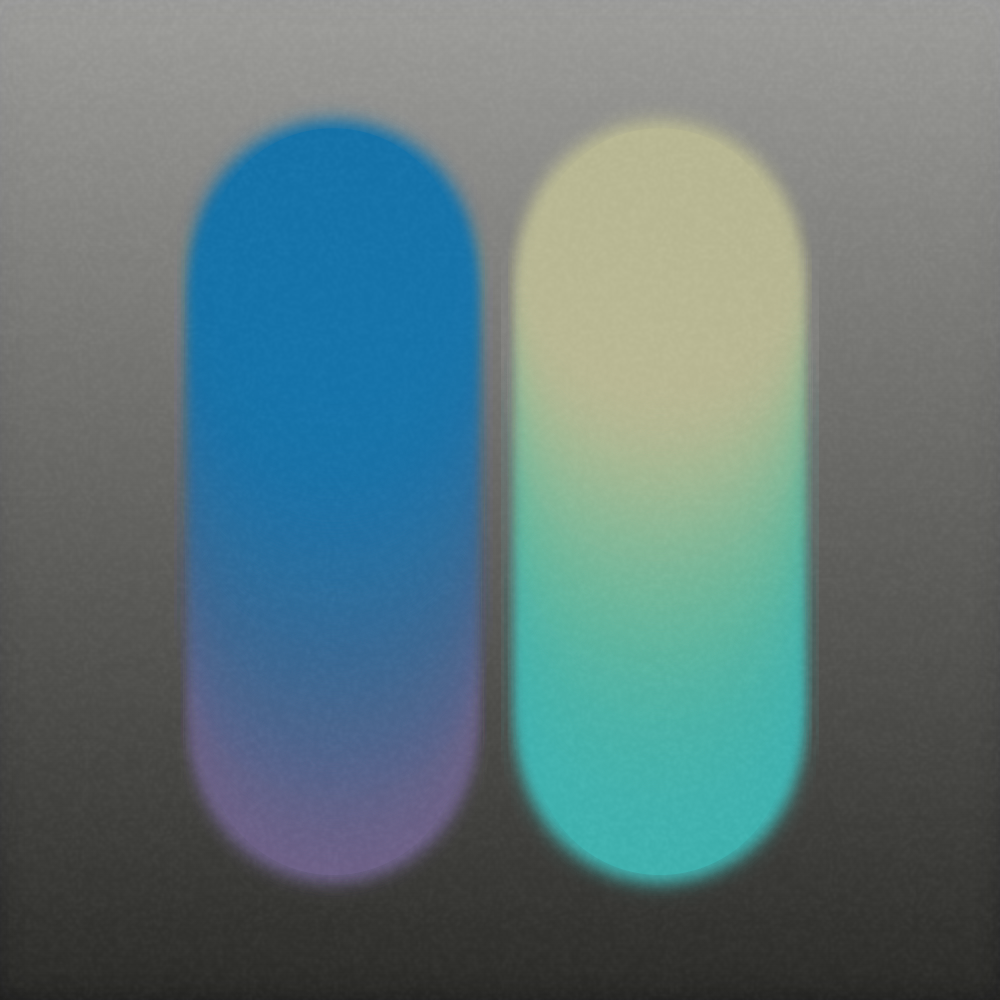

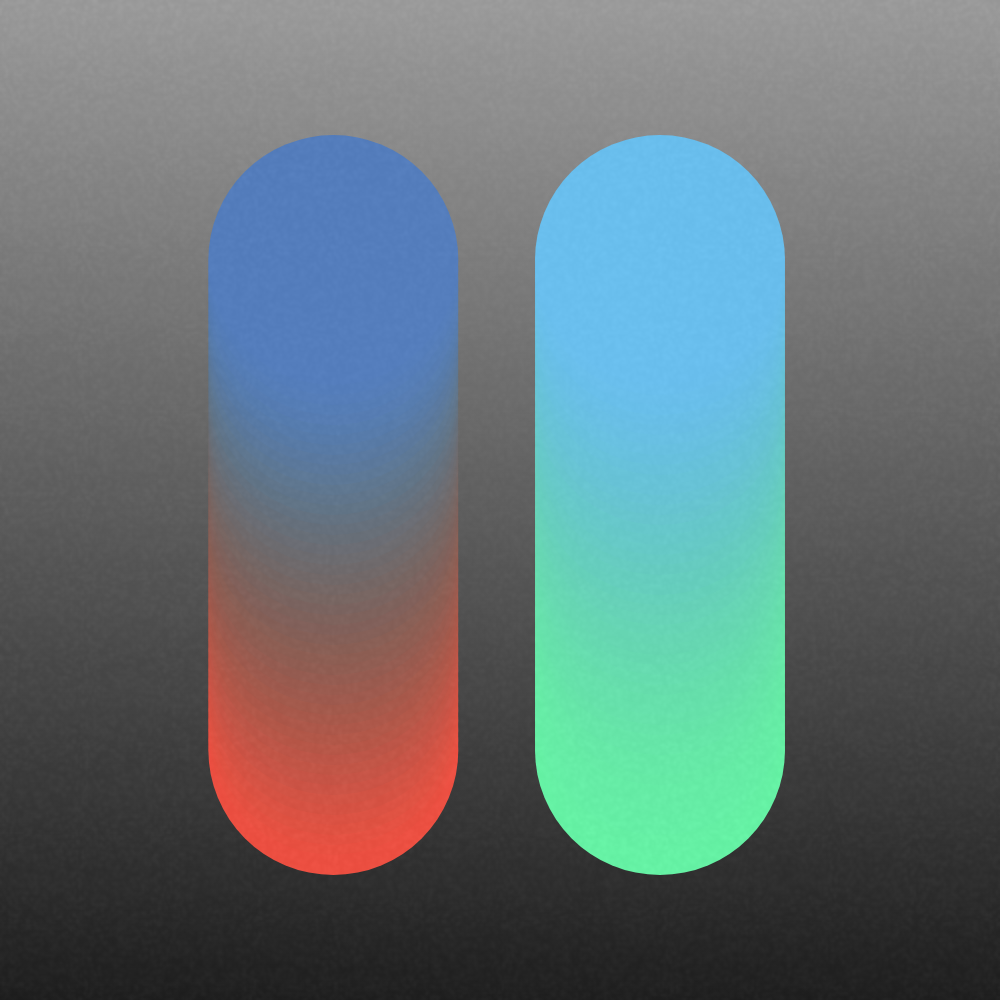
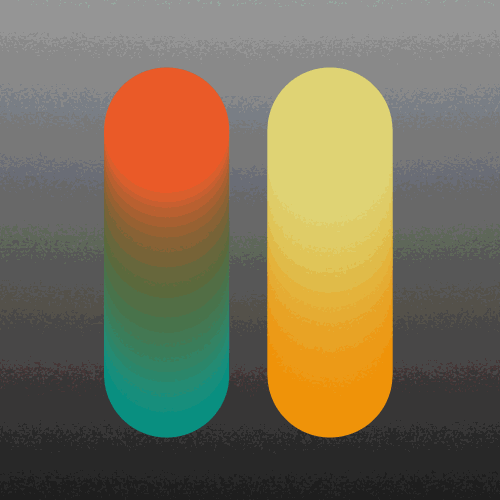
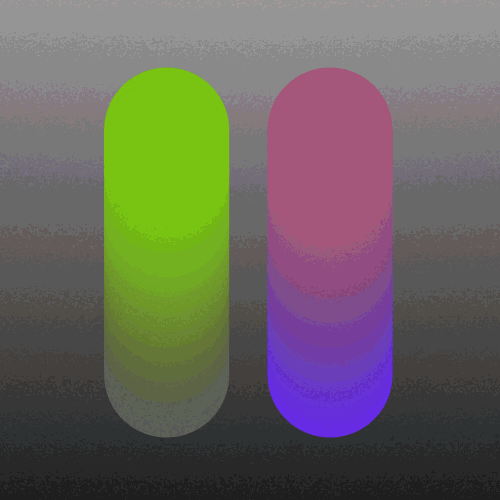
JAN. 23.
Inspired by brutalism.
Brutalism is real cool. For this prompt I struggled in p5 for a bit and then went,” honestly, blender is a better tool for this “and whipped up a pretty close approximation to the inspiration given the limited time I worked on the system.
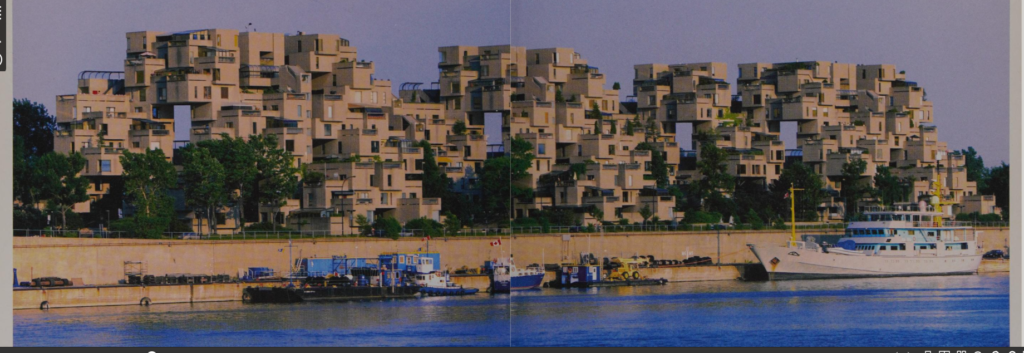
Habitat 67
The inspiration for my Genuary 23 piece
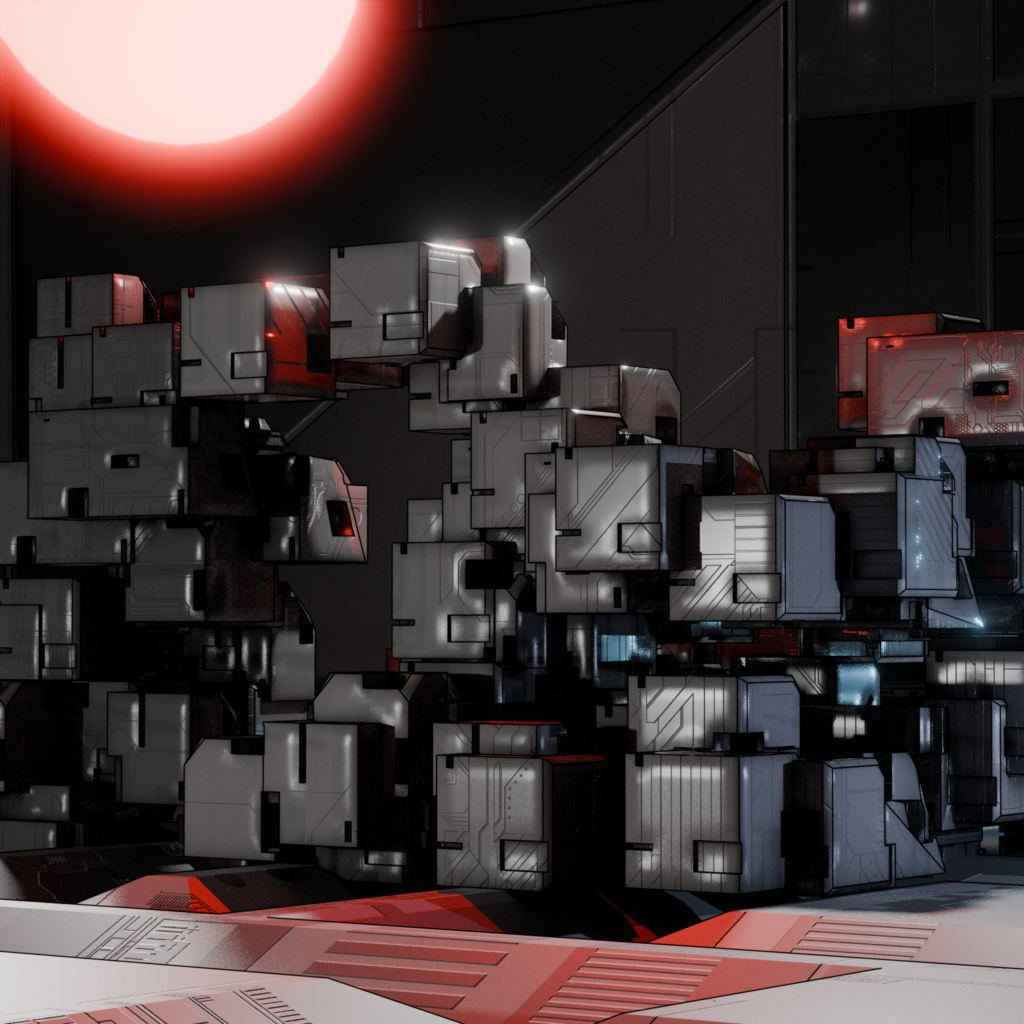
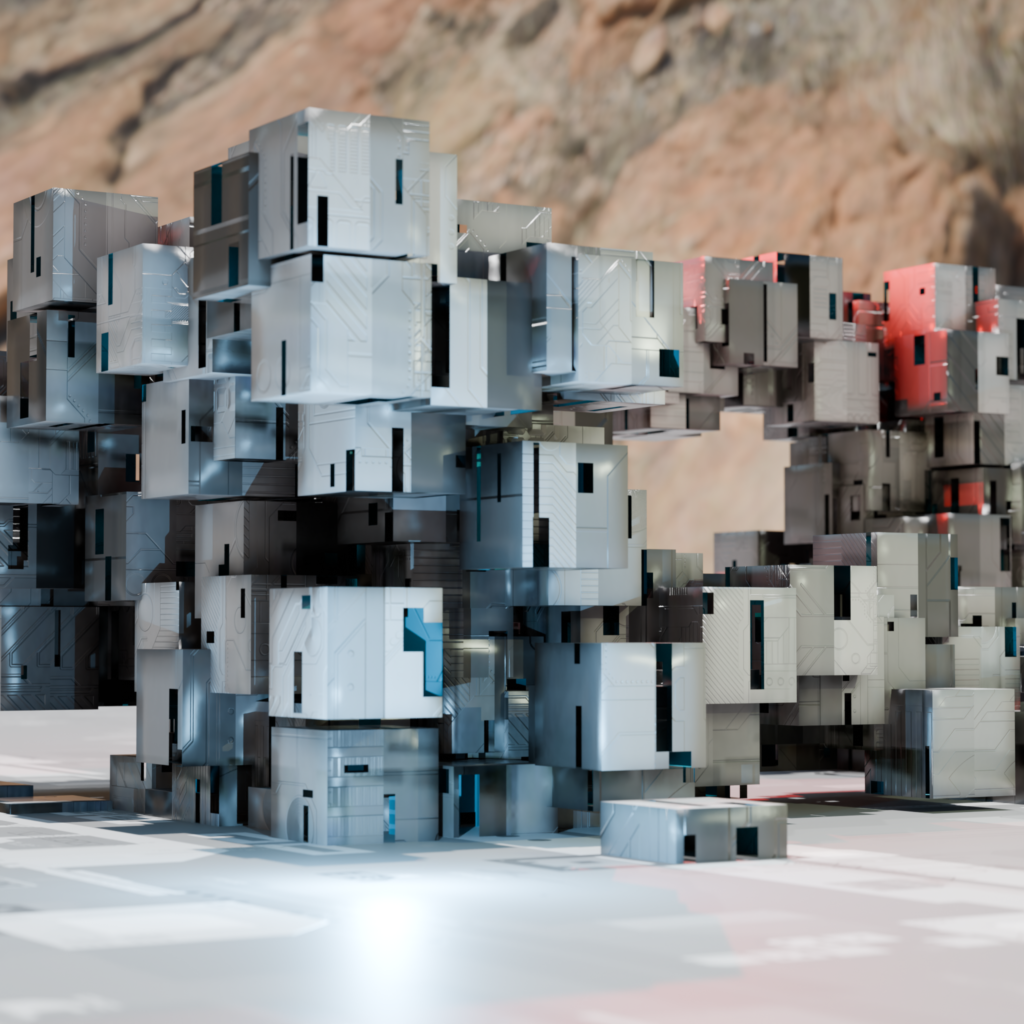
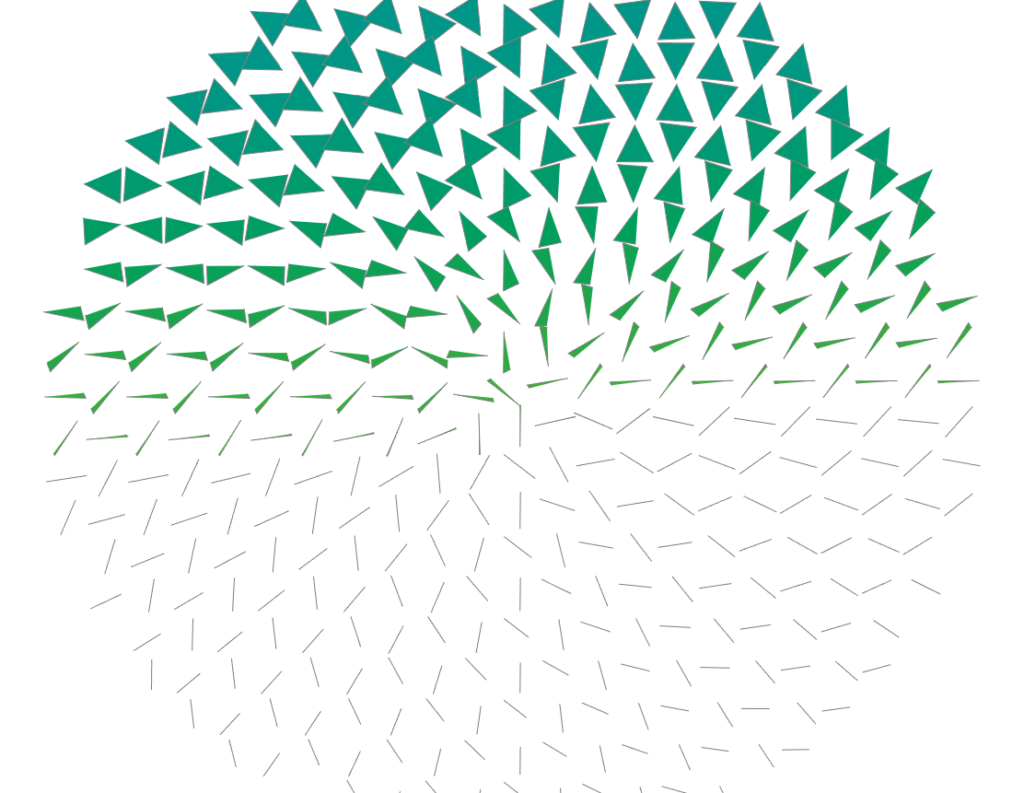
JAN. 24.
Geometric art – pick either a circle, rectangle, or triangle and use only that geometric shape.
This is one I struggled with getting an output I wanted to share. I had an idea for an arch made out of ellipses using some code from previous days but I couldn’t get the perspective right. Doubled up this with Jan 26th so the code is shared down there just a bit :).
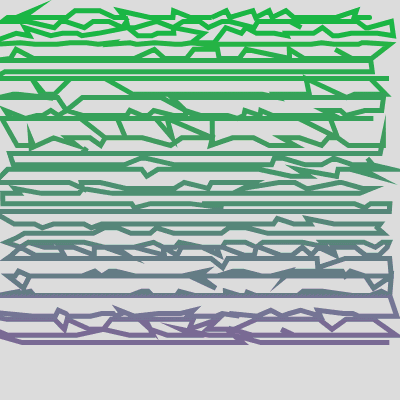
JAN. 25.
One line that may or may not intersect itself
This challenge was fun too. My strategy for this one was to make a grid, then place a point randomly inside of a cell, and connect points from left to right, right to left alternatingly down the grid. Lost the code for this one though, cant find it anywhere.
JAN. 26.
Symmetry.
more triangles. I really enjoy how this one turned out. Also kind of did some cool stuff while working on it. I modified the animS library to draw shapes in loops, so shapes can be drawn back and forth vertex by vertex. I still need to modify a few other methods, but maybe Ill release that at some point. I definitely need to find a bunch of interesting ways to use it!
JAN. 27.
Make something interesting with no randomness or noise or trig.
Making something with no randomness felt kind of out of place, most of my art is driven with trig , or like noise in some shape or form. definitely took me out of my comfort zone. I ended up doing like a cellular automata thing. This one ended up being kind of textile esque. Honestly really enjoyed some of the outputs, at least after it goes for a while. The cells are a 3d grid that travels up and loops around over time.
JAN. 28.
Infinite Scroll. Struggled to really get something that was seamless here. Ended up keeping it simple with a little gradient. Lots of failures along the way that i can work off of later.
JAN. 29.
Grid-based graphic design.
ALl i really did here was a recursive subdivided grid an move that thang. I have this idea for a grid that is adaptive in its sizing and changes with its neigbors, this one almost has it, but its just not there yet. really need to rethink how i actually want that done.
JAN. 30.
Abstract map.
For this one i just took some noise and made a lil topographical map . Tried my best to get good polygons for filling with different colors for water, land etc., but really only got outlines right. Drawing too many points i think.
JAN. 31.
Pixel sorting.
For this one I just made a quick system for pixel sorting over time based on interchangable rules. Came out pretty cool, if fairly standard.
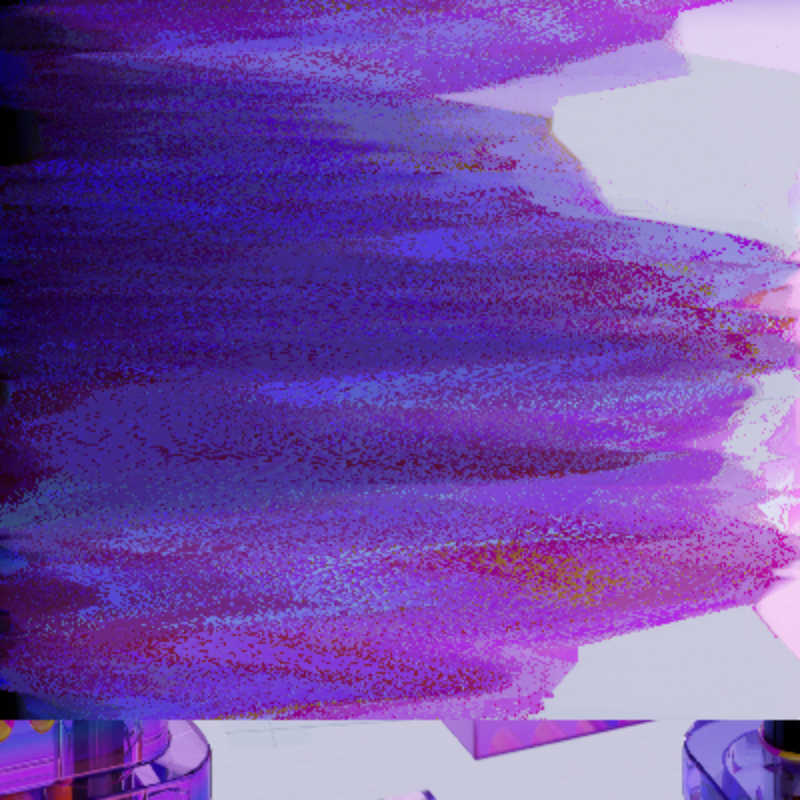
Again, this challenge was super rewarding.
Until next year! Cheers!
